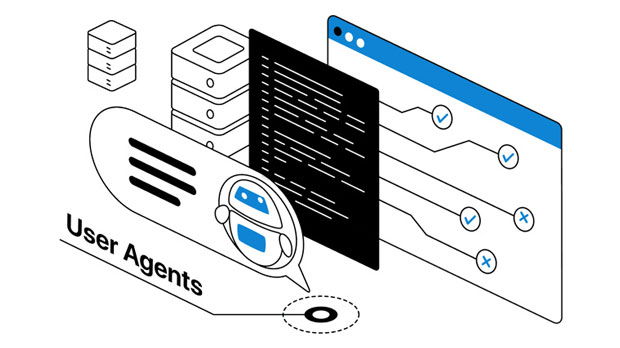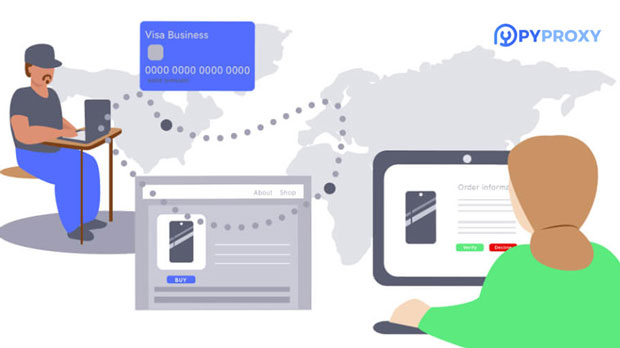In the era of global connectivity, many users seek to access foreign websites for various reasons, from accessing region-specific content to ensuring privacy. A common method to bypass geographical restrictions is through the use of proxies. However, the limitations of using a plain proxy to access foreign websites are not always clear to users. A plain proxy offers some degree of anonymity by masking the user's IP address, but it also comes with a series of limitations. These limitations can affect the overall user experience and compromise the intended benefits of using such a proxy. This article explores these limitations, including security concerns, performance issues, and compatibility problems, providing a comprehensive overview for users seeking to use proxies effectively. 1. Lack of Encryption and Security RisksOne of the most significant limitations of using a plain proxy is the lack of encryption. Unlike VPNs, which create a secure encrypted tunnel between the user and the destination website, plain proxies only work by forwarding data packets. This means that any data transmitted via a plain proxy is vulnerable to interception. Hackers, cybercriminals, or even internet service providers (ISPs) can easily monitor the data being sent and received, potentially exposing sensitive information such as login credentials, financial details, and personal data.This vulnerability is particularly concerning when accessing foreign websites that require users to input sensitive information. Without encryption, a plain proxy leaves users exposed to man-in-the-middle attacks, where malicious actors can intercept and manipulate the data. Therefore, for users concerned about online privacy, a plain proxy is not a secure choice.2. Limited Anonymity and Privacy ProtectionAnother significant drawback of plain proxies is the limited level of anonymity they provide. While proxies can mask the user's IP address, they do not hide other identifying information. In many cases, the proxy server itself logs user activities, which can then be accessed by the server operator or third parties. This makes the user's browsing activities traceable, undermining the idea of privacy.Moreover, websites can use advanced techniques like fingerprinting to track users even if they use a proxy. Browser configurations, installed plugins, screen resolution, and other device characteristics can be used to uniquely identify a user. In this sense, while a plain proxy may change the user's apparent location, it does little to enhance privacy or ensure complete anonymity.3. Performance and Speed IssuesUsing a plain proxy to access foreign websites can also lead to noticeable performance and speed issues. Proxies act as intermediaries between the user and the destination website, meaning that all internet traffic must pass through the proxy server. Depending on the proxy's location, this can introduce additional latency, especially if the proxy is geographically distant from the user or the target website.Furthermore, many free or low-cost proxy services tend to be overcrowded with users. This overload can result in slower speeds, frequent disconnects, and a suboptimal browsing experience. Users may find that they are unable to stream content, download large files, or access websites with complex scripts without facing delays or interruptions.4. Compatibility and Access IssuesPlain proxies can also encounter compatibility issues when trying to access certain websites. Some websites actively block or filter traffic that appears to be coming from proxy servers. This is particularly true for websites that rely heavily on geographical location data for content delivery, such as streaming services or e-commerce sites. As a result, users may be unable to access the content they wish to view, rendering the proxy ineffective for those purposes.Additionally, some websites and online services require JavaScript, cookies, or other advanced technologies to function properly. Many plain proxies may not support these features, leading to a poor user experience or even an inability to access the site altogether. In contrast, more sophisticated tools like VPNs and specialized proxies are better equipped to handle such challenges.5. Legal and Ethical ConcernsAnother consideration when using a plain proxy is the legal and ethical implications. In some countries, using proxies to bypass geographical restrictions or to access restricted content may violate local laws or terms of service agreements. For example, streaming copyrighted content through a proxy can lead to legal consequences, including fines or account bans.Moreover, certain types of proxy usage, such as scraping content from websites or using proxies for illicit activities, may breach ethical guidelines. Using proxies to conceal the true identity behind malicious actions can cause harm to both the user and the website being targeted. It is essential for users to be aware of the legal and ethical landscape surrounding proxy use and ensure they are not engaging in any activities that could lead to legal repercussions.6. Proxy Server Reliability and TrustworthinessThe reliability and trustworthiness of the proxy server itself is another critical issue. Free proxy services often come with a host of risks, including server downtime, unreliable connections, and the potential for malicious activities. Users may find that the proxy server they rely on is slow, unstable, or even harmful to their device's security.In addition, many free proxies may be operated by unreliable third parties with questionable intentions. Some proxies may log users' browsing history, sell the data to advertisers, or inject ads into the user's browsing session. These practices further erode the privacy benefits that users seek when using a proxy in the first place.ConclusionWhile plain proxies offer a simple and often inexpensive solution to access foreign websites, they come with a range of limitations that can significantly impact user experience. From security vulnerabilities and limited privacy protection to performance issues and compatibility problems, plain proxies are not always the ideal choice for users seeking reliable and secure browsing. To overcome these limitations, users may consider using more advanced tools like VPNs or specialized proxy services that offer enhanced encryption, better performance, and greater privacy protection. Ultimately, understanding the limitations of plain proxies is crucial for making informed decisions about online privacy and security.
Jul 02, 2025



































































